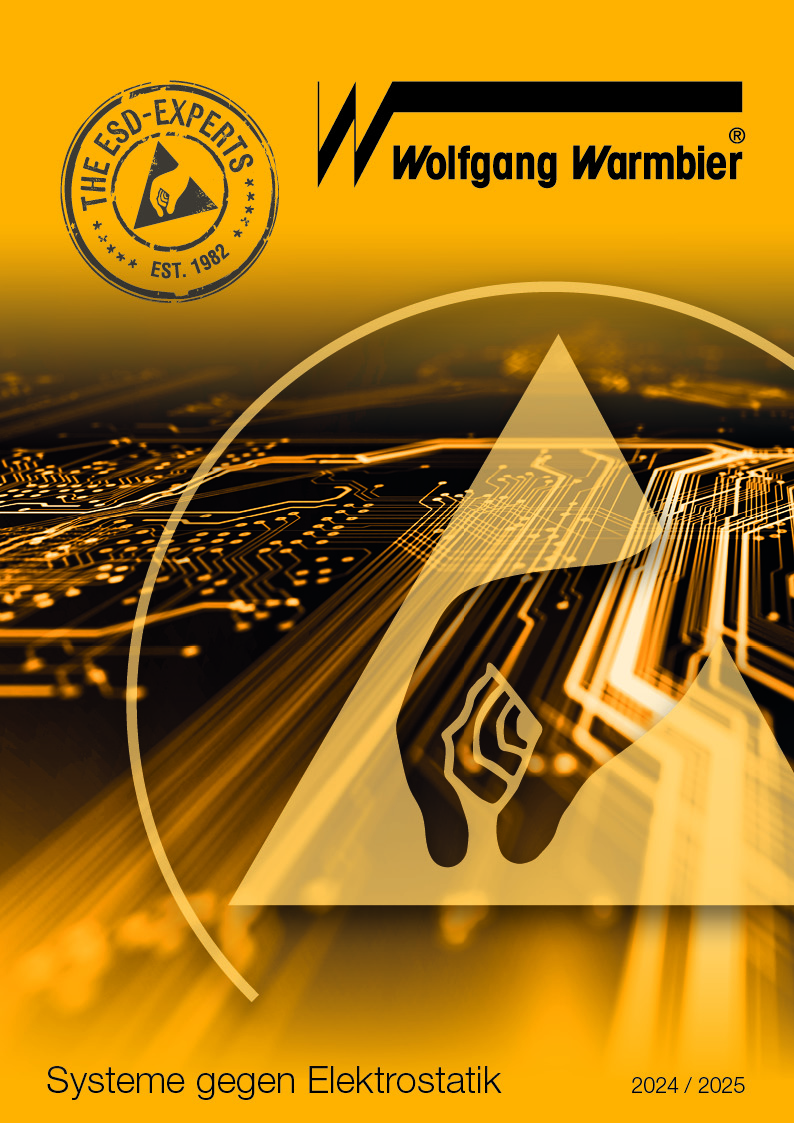What does ESD actually mean?
What does ESD actually mean?
ESD stands for Electrostatic Discharge. We’ve all experienced this phenomenon for example, when walking across a carpet and then touching a metal doorknob. As we walk or stand up, an electrostatic charge builds up on our body. This charge is suddenly released when we come into contact with a conductive object. Depending on the voltage, we may feel a small shock. In some cases, a discharge can even occur without direct contact mere proximity to a conductive object can trigger it.
Why is ESD a problem in electronics?
Electrostatic-sensitive devices (ESDS) can be seriously damaged or even permanently destroyed by an ESD event. Because of their delicate structures, these components are highly sensitive to voltage differences. That’s why external ESD protection is essential. Conductive and dissipative materials help either prevent electrostatic charging or safely discharge it in a controlled manner.
ESD in nature
We also encounter ESD in nature for instance, in the form of lightning during a thunderstorm. A lightning strike on a tree contains an immense amount of energy, comparable to the energy released during an electrostatic discharge between a person and an electronic component. The visible damage to the tree can be seen as a metaphor for the invisible, yet often fatal, damage that occurs within a microchip.
Why ESD protection is so important for electronic components!
Electrostatic discharges remain mostly undetected by humans, because we can only perceive them from a body voltage of approx. 3.000 V. It is precisely this circumstance that makes humans a major risk factor, because they are not aware of it. Electrostatic charges occur on normal clothing, especially if they contain synthetic fibres, on hair, through shoes with rubber soles and on insulating objects such as transport containers made of insulating plastics. These charges can cause considerable damage to electronic components and assemblies – even at relatively low voltages. This is why it is so important to implement ESD protection in electronics manufacturing and to define an ESD protected area and equip both workplaces and people with ESD-safe materials and appropriate measuring devices.
This includes, for example:
- Dissipative occupational shoes and floor coverings
- Dissipative furnishings, e.g. tables, chairs
- Shelves and transport trolleys
- ESD garments
- ESD packakging
- Air Ionizers
- ESD Test and Measurement Equipment
To prevent unwanted charges and ESD damage, Wolfgang Warmbier GmbH & Co. KG offers all ESD materials that are required in an ESD Protection Area, a so-called EPA.

We have over 40 years of experience in this field and offer professional support in solving a wide range of ESD problems. In the Hegau community of Hilzingen near Lake Constance, we produce and distribute high-quality Static Control Materials and Systems. Founded in 1982, the company has become the market leader in Europe over the past 3 decades and now translates its product catalogue into 14 languages. The ESD protection systems are supplied to more than 30 countries worldwide and are used in a wide range of industrial sectors. First and foremost in the electronics industry, the automotive industry and medical technology, to name but a few.
Since 1998, Wolfgang Warmbier GmbH & Co. KG has been ISO-certified, most recently updated in 2017 according to ISO 9001:2015, by DQS. In the ESD range you will find, among other things, floor materials, personnel grounding systems, foams, storage and transport systems, measuring devices, and service equipment. Our qualified team advises you on setting up ESD protected areas and supports you in their planning and implementation. At our location in Hilzingen, we also offer ESD training and workshops.




